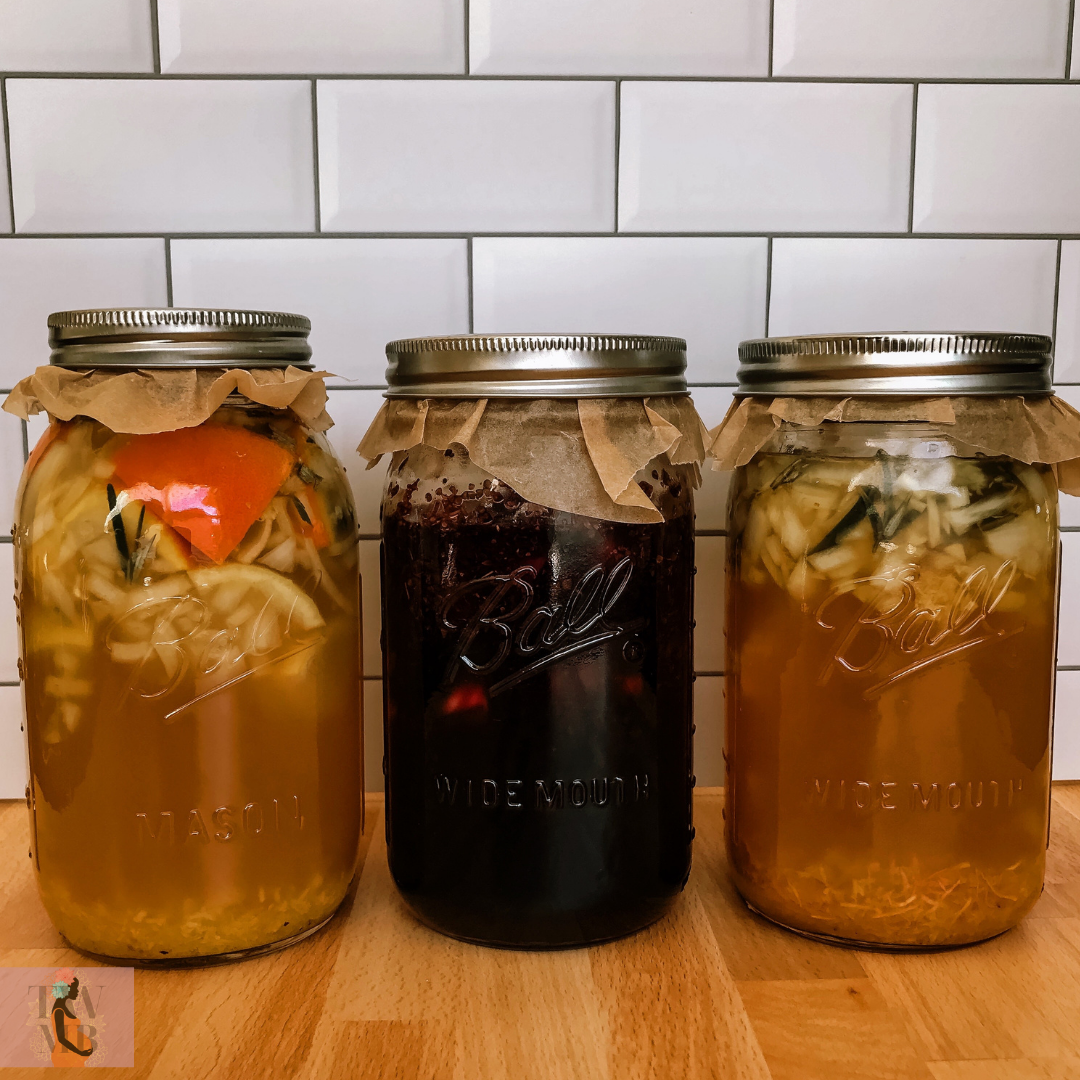
Fall is just weeks away which welcomes flu season and colds galore. Supporting the immune system ahead of cold + flu season has been our usual protocol. We started making fire cider in batches in February of 2020 and have found it to be beneficial from both a preventative and maintenance standpoint. Today, I’m going to share the health benefits of fire cider plus a recipe that will support your immune system all year round!
What is Fire Cider?
Fire cider is a sweet, tangy, and spicy old-school herbal and homeopathic tonic that has been used for centuries to prevent and combat colds and viruses. It comes with many of the same health benefits as elderberry but it can be tailored to the health benefit you’re seeking, depending on the variation of herbs infused. Fire Cider is traditionally infused with raw apple cider vinegar, various herbs, root vegetables, spices and sweetened with honey.
How Long Does Fire Cider Last?
This is the best part, fire cider can last for up to 12 months when refrigerated. If you make a batch today, you’ll need to steep and infuse it for 4-6 weeks. You’ll strain your infusion and store it in your fridge by the second week of September. You’ll now have an immune-supporting herbal tonic on hand until September 2022. You’re covered for this cold & flu season and allergy season!
What Herbs & Spices Should Be Used To Make Fire Cider?
The types of herbs you decide to use honestly depend on your preference and the health benefit you’re seeking out. Traditional fire cider recipes call for use of garlic, onion, ginger, turmeric, and horseradish. Here is a quick breakdown of the benefits of the basic herbs, spices, and vegetables used to make fire cider:
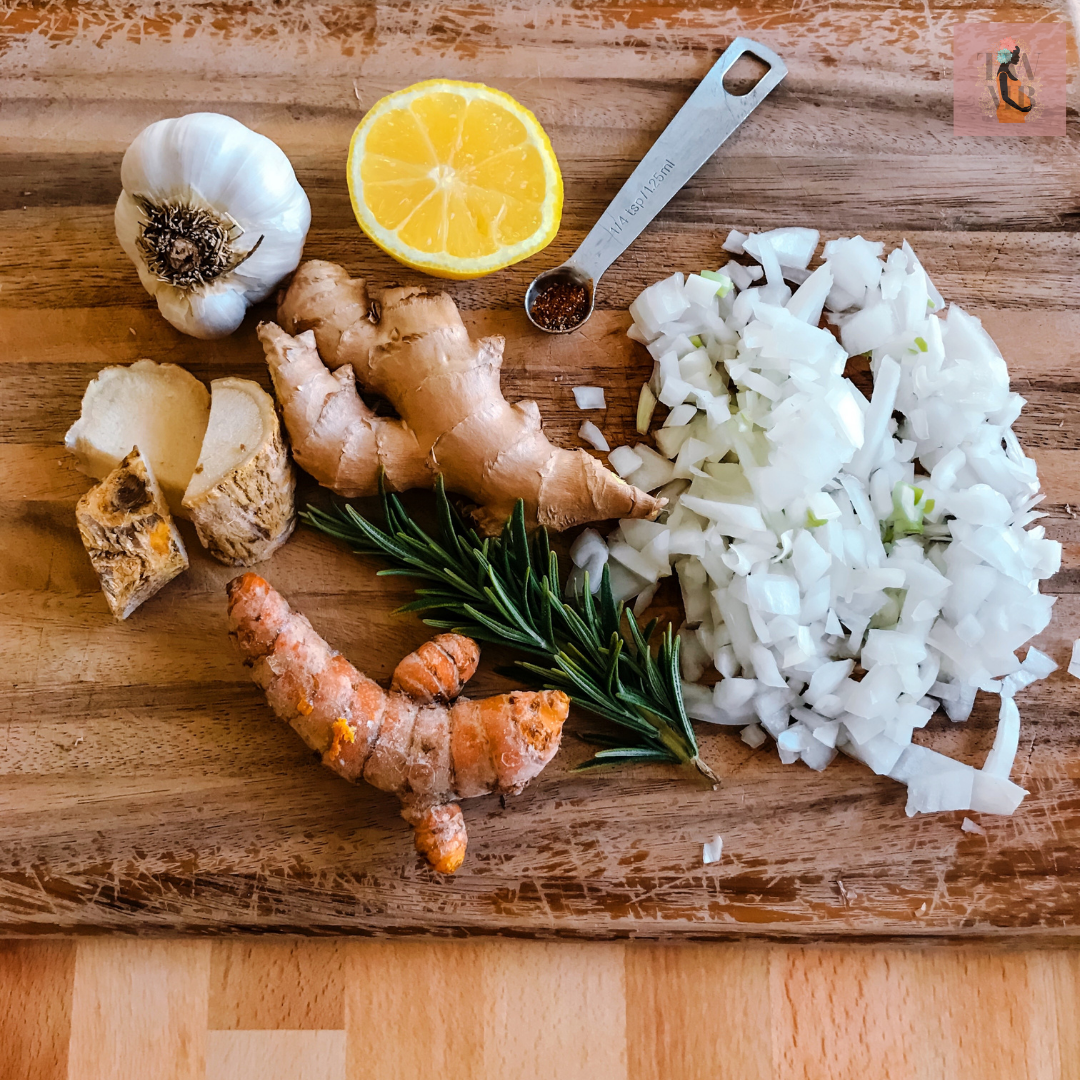
Horseradish:
Horseradish is a pungent root vegetable that uses its heat to increase blood flow, body temperature, and digestion to keep toxins moving through and out of your body through increased sweat and urination. Horseradish also has antibacterial properties to fight sinus infections and can help stimulate your lungs to assist with productive coughing, ultimately keeping your chest free from congestion. Horseradish has been researched for its medicinal properties in addition to anti-cancer, antimicrobial, antiseptic, and diuretic properties.
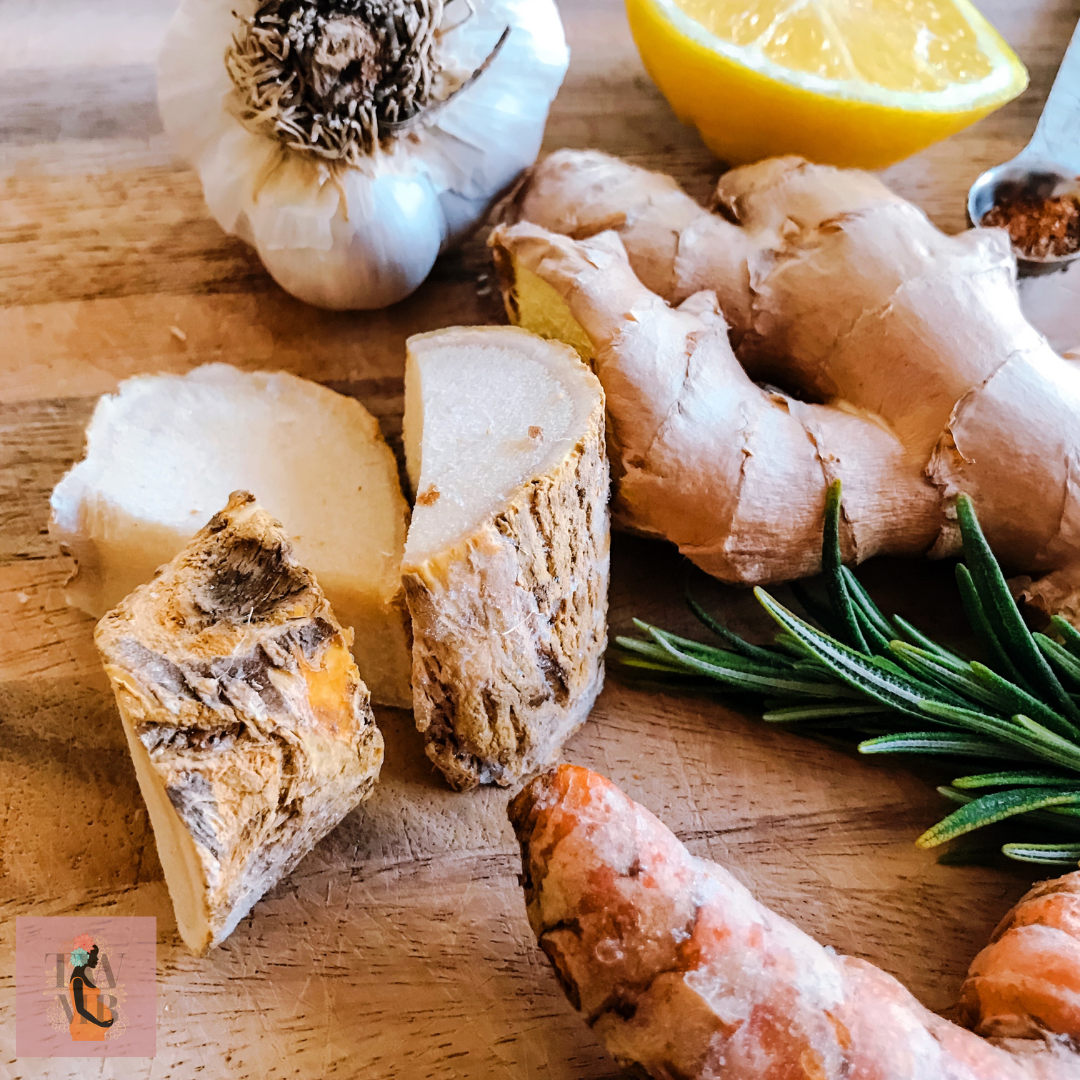
The flavor of horseradish is very similar to wasabi. When grating, cutting, or handling fresh horseradish you’ll want to wear protective gloves and be in a well-ventilated area. This veggie is extremely potent and it can sting and burn your eyes, throat, and hands.
Ginger Root:
Ginger originates from Southeast Asia and is considered to be one of the healthiest spices in the world. Ginger has been proven to ease the effects of nausea, lower blood sugar, improve weight management, reduce the risks of heart disease, and much more. Ginger contains gingerol, the spice’s main bioactive compound & the source of its widely known and studied medicinal properties.
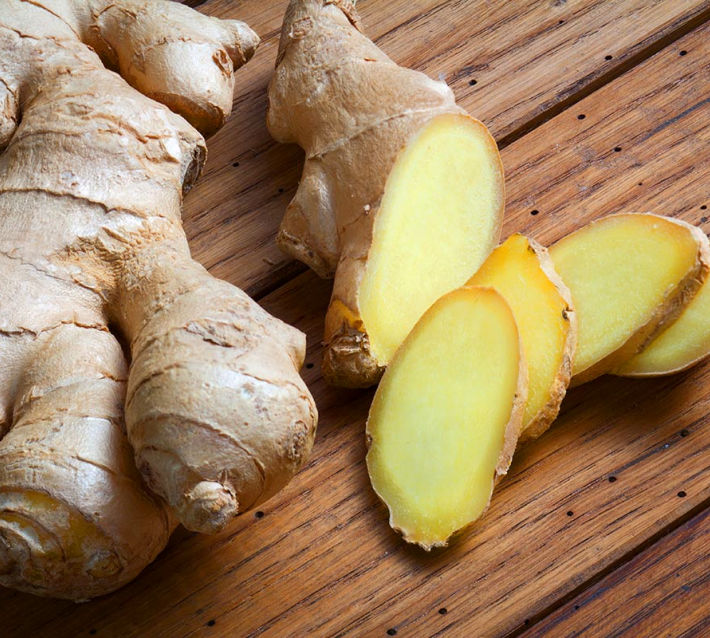
Gingerol has powerful anti-inflammatory and antioxidant effects. It may help reduce oxidative stress, which is the result of having an excess amount of free radicals in the body. Excessive free radicals are what cause genetic mutations & leaves us susceptible to disease. I’ve spoken on the topic of free radicals here is you’d like to learn more.
Turmeric:
Similar to horseradish root and ginger root, turmeric is a well-known spice that is native to Southeast Asia. It is primarily grown in India and contains a compound called curcumin. Curcumin is known for its anti-inflammatory & antioxidant properties. Known for giving curry its famous bright yellow hue, turmeric has been associated with reducing the risk of Alzheimer’s disease, improving insulin resistance (diabetes) reducing the symptoms of arthritis and chronic pain.
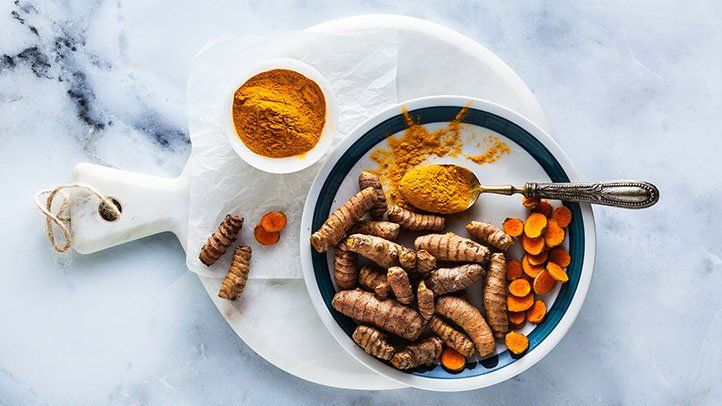
Turmeric must be paired with black pepper in order to be effectively absorbed through the bloodstream. Studies have found that turmeric’s absorption rate increased to a bioavailability rate of 2000% when combined with black pepper. This jump in the bioavailability rate is a result of black pepper’s compound piperine.
Garlic:
While garlic is widely used for culinary dishes, this medicinal herb is also known for its antioxidant, anti-inflammatory, antiseptic, and immune-supporting properties. Garlic has the ability to stimulate the production of white blood cells.
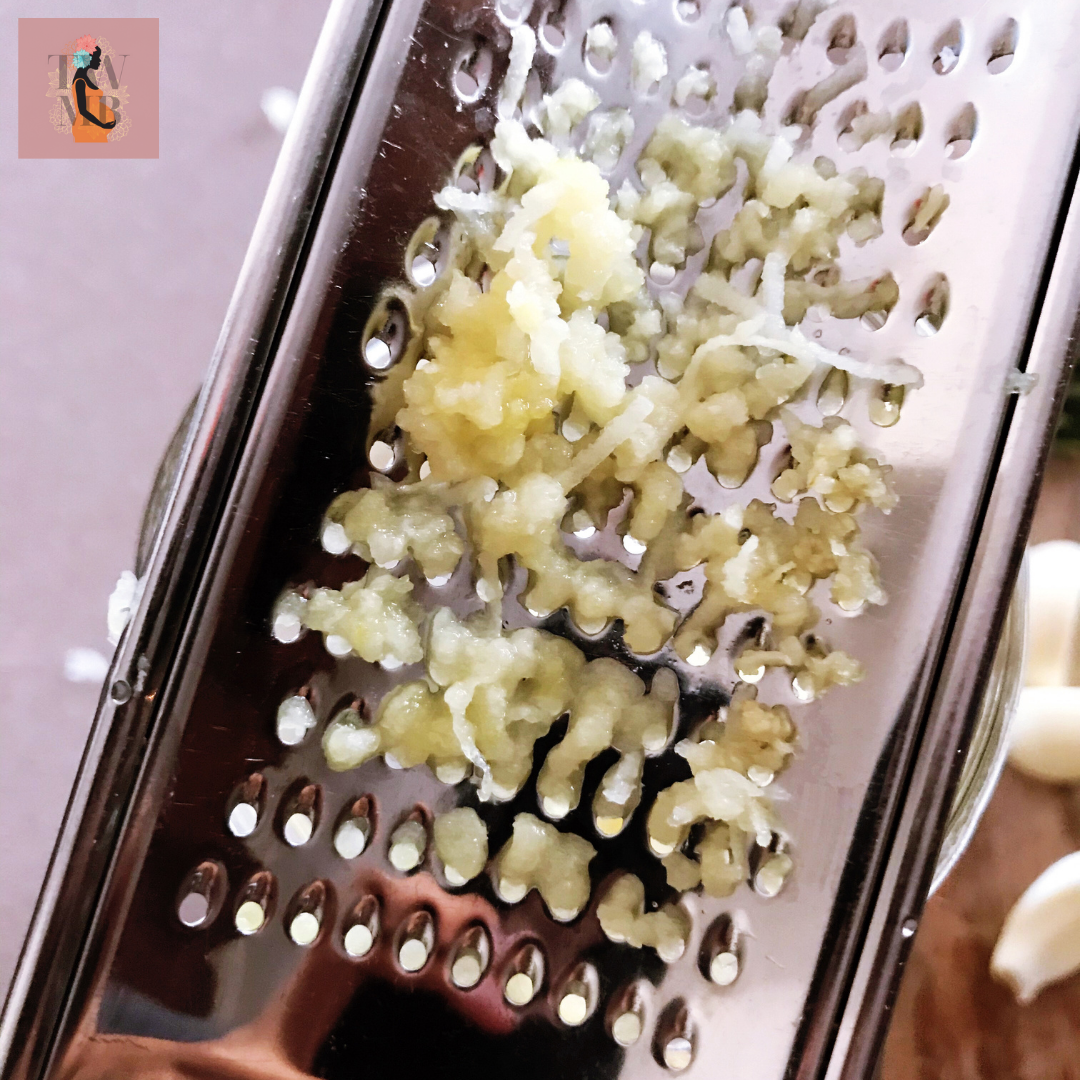
Once stimulated, white blood cells then attack and fight against harmful bacteria and viruses. The sulfur compounds in garlic also increase blood flow and improve overall circulation. Allicin is one of the key immune-stimulating nutrients in garlic when consumed raw. When cooked, the potency and immune-supporting abilities of allicin decreases so it is best to consume raw for medicinal purposes. Garlic metabolizes well when crushed and consumed raw so there is no need to pair it with additional herbs or spices to increase its bioavailability. If you want to consume solo you could!
Onion:
Similar to garlic, onion contains immune-supporting allicin and also helps to increase circulation. Remember, improved circulation gets toxins and infection moving through the body through sweat and urination. Onion has a secret weapon by the name of quercetin.
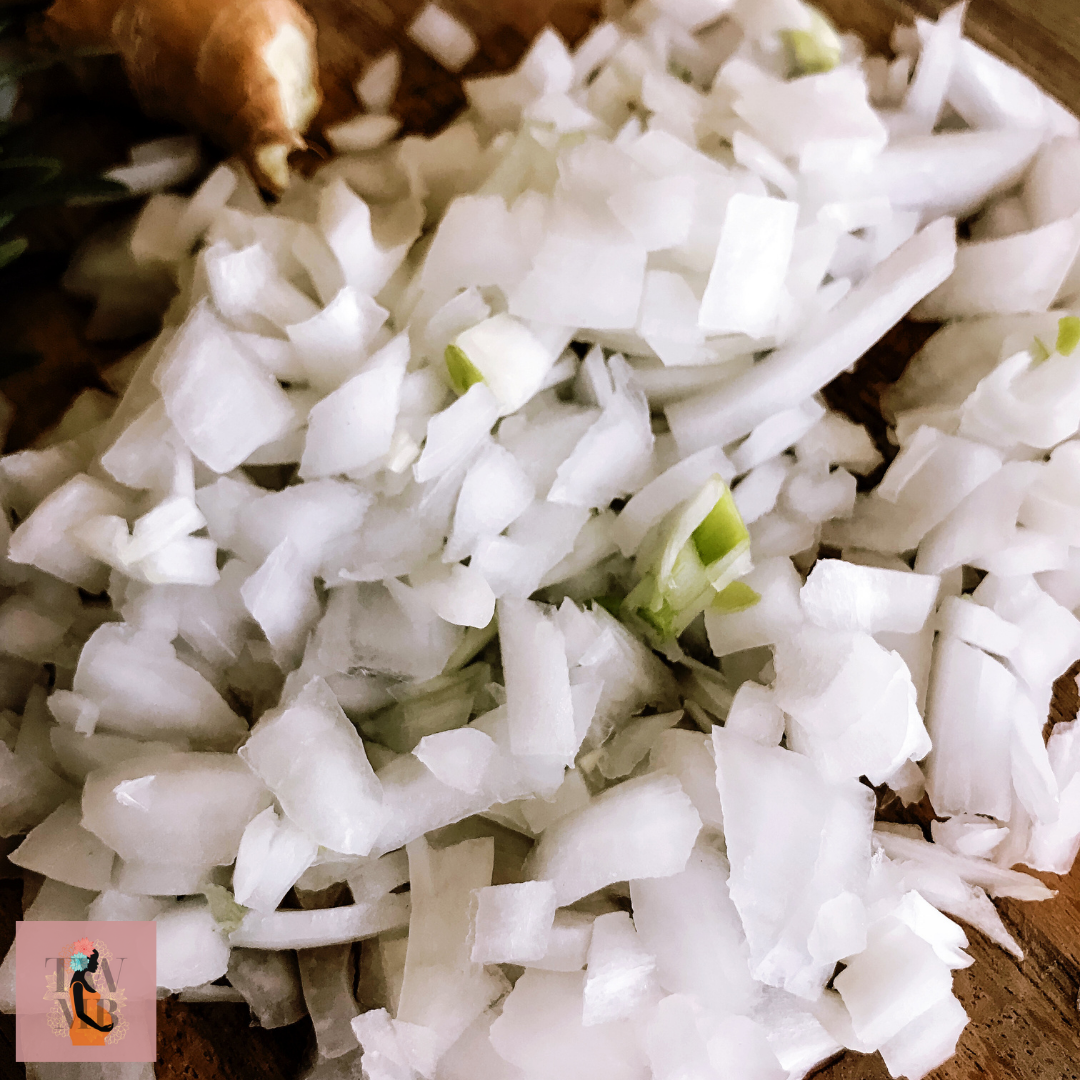
Quercetin is often used for allergy symptom relief due to its ability to naturally reduce histamine response and inflammation. Onion’s secret weapon also contains antioxidant and therapeutic properties, such as the ability to reduce viral replication and lung inflammation.
Capsaicin:
Cayenne pepper is loaded with a component called capsaicin, which gives cayenne pepper its fiery taste. Cayenne pepper helps to dilate blood vessels in the nose and stimulate secretions, helping to drain the sinuses. When you add cayenne pepper to your fire cider batch you are stimulating your circulation system, warming your body, while gaining a decongestant, expectorant, and pain reliever, all at once. You can also use chili powder in place of cayenne pepper if you don’t have it on hand. Chili powder also contains capsaicin giving it the same decongestant properties as cayenne pepper.
Honey:
Honey is added to the fire cider after the infusion process. Honey works to balance out the spicy heat of this tonic, making it much more tolerable to consume. I’d recommend using local honey for its natural ability to reduce allergies. When you use local honey you’re being exposed to local pollens in the area in which you live. It essentially works like a natural immunization, stimulating then reducing your reactive responses. For strict vegans who want to avoid honey, you can simply remove it, or use a natural plant-based replacement like coconut nectar or agave syrup. I use vegan-unhoney when not using local honey or agave syrup.
Who Should Avoid Fire Cider?
Those who are on prescribed medications or treatments should discuss whether taking fire cider is safe with a trusted healthcare provider. Apple Cider Vinegar and certain herbs can interfere with prescribed medications. Also, those who have a history of ulcers should be mindful that ACV can aggravate their symptoms. If you are pregnant or breastfeeding please be mindful of the herbs you are using as some can be harmful to a developing baby or transfer through mother’s milk. Always check with a trusted birth worker, herbalist, or healthcare provider prior beforehand.
Recipe:
- 1 medium onion, diced (sweet yellow or white is best)
- 4 to 5 cloves of garlic, chopped
- 3 to 4 tbsp of fresh grated horseradish (remember to wear gloves!)
- 3 to 4 tbsp fresh grated ginger root
- Optional: A few sprigs of fresh herbs (I used rosemary but thyme and oregano are great as well). Lemon or Orange for a citrus flavor.
- Raw Unpasteurized Apple Cider Vinegar – Enough to fill the jar & submerge the other ingredients.
- 1/4 tsp Black pepper
- Raw honey, local if possible – substitute with agave syrup or coconut nectar if you’re strictly vegan. Must be added last, see the instructions below.
- Cayenne pepper, also added later.
Instructions:
Step 1: Chop
Chop and grate all of your herbs and vegetables into smaller pieces, sans honey and cayenne pepper. The smaller the pieces are the better all of your ingredients will infuse. Feel free to use a food processor like this one to make this process easier.
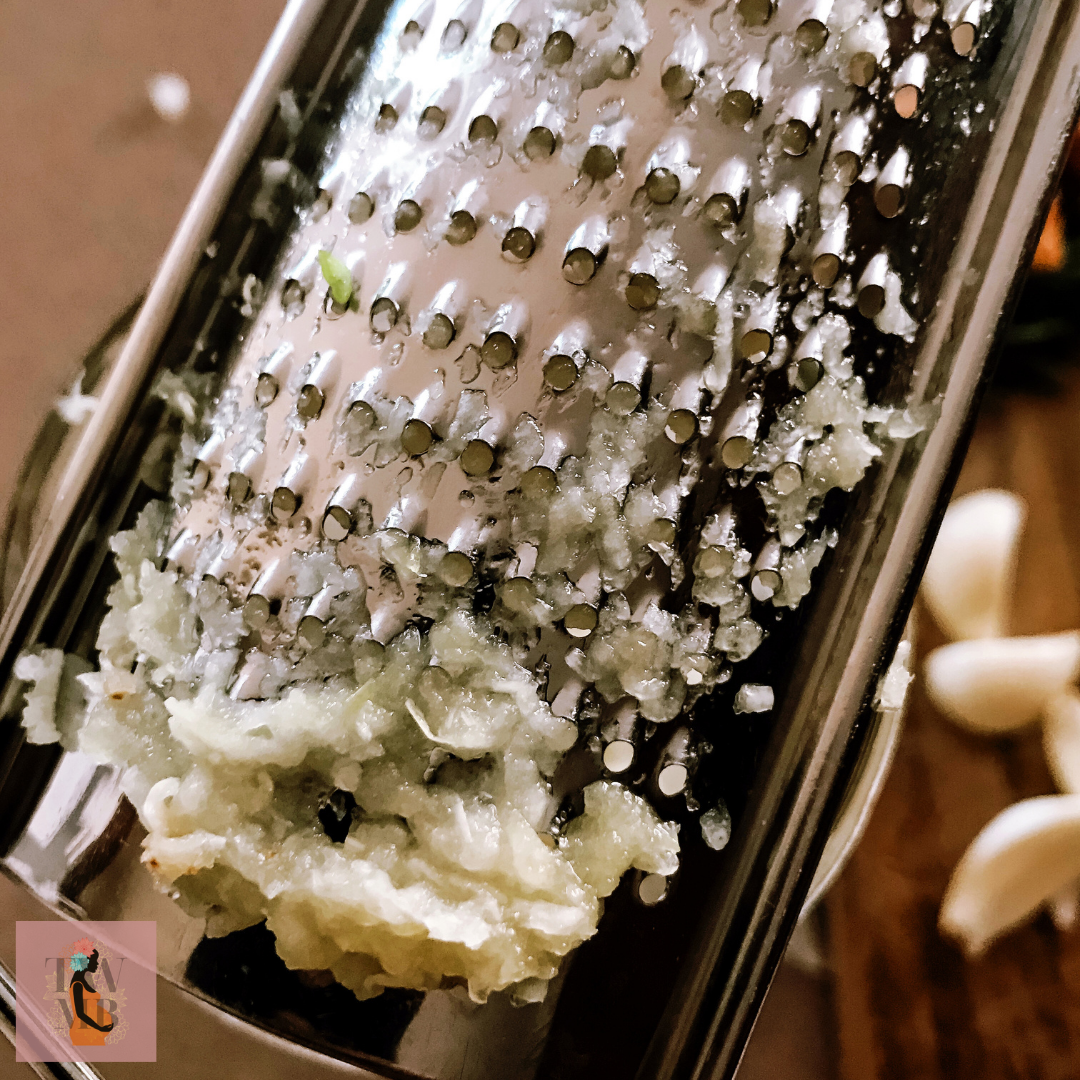
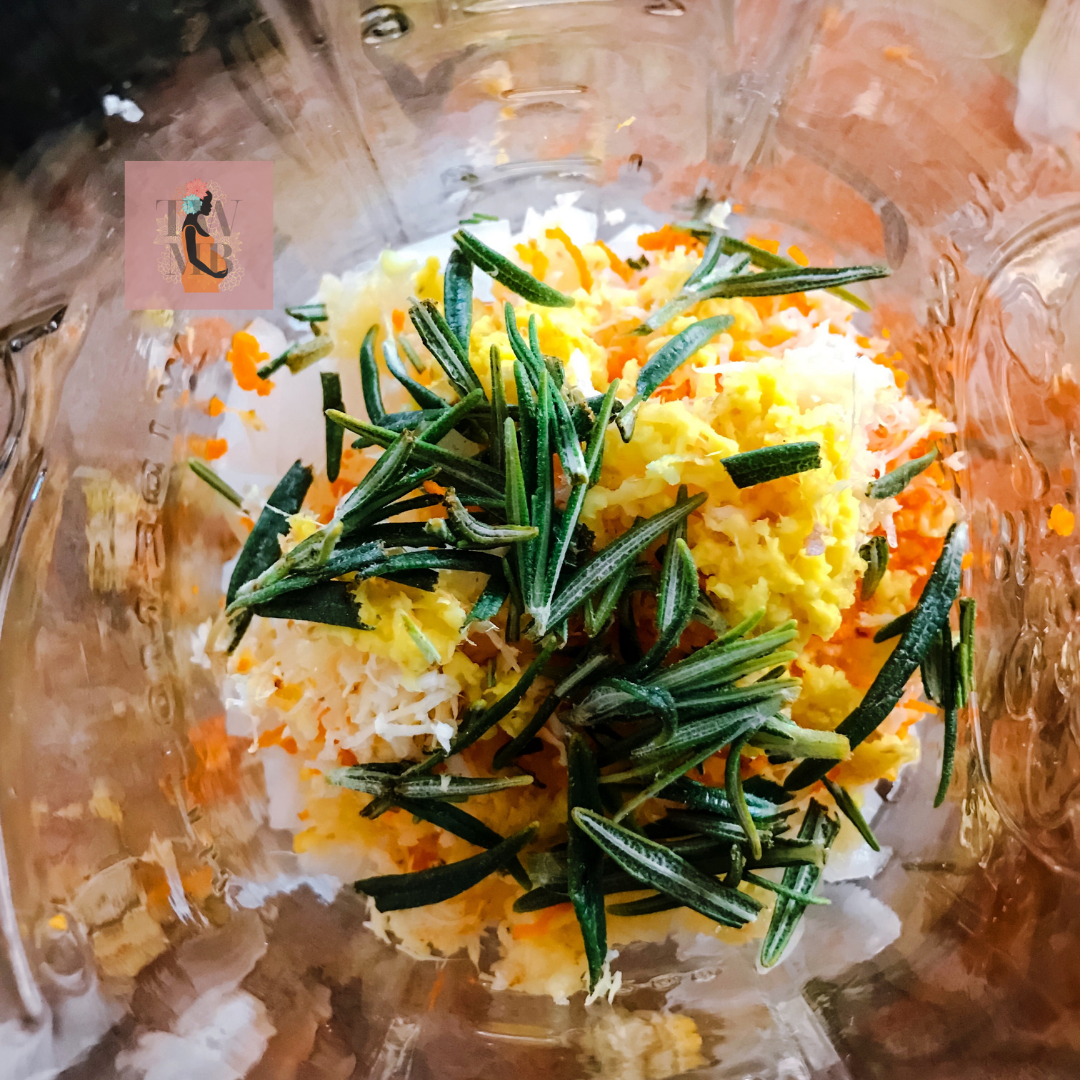
Step 2: Fill Er’ Up
Add all the goodies into your choice size of a mason jar, which should be about two-thirds to three-quarters full of the prepared ingredients when done. Keep in mind the more full your jar is, the less room you have for liquid, which will result in less end product.
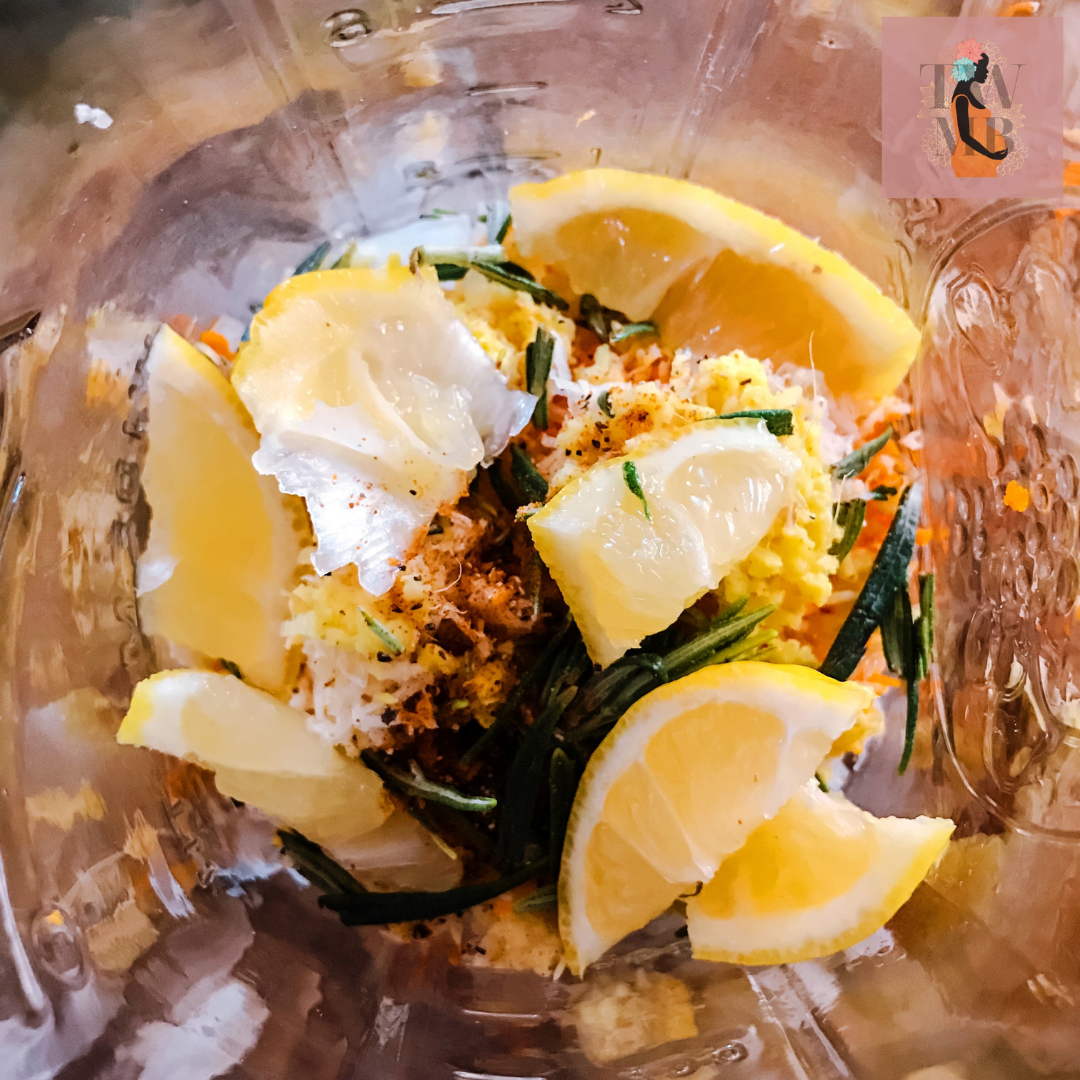
Step 3: Pour It Up, Pour It Up
Slowly pour your apple cider vinegar over everything. lightly knocking out air bubbles as needed, until the container is full.
Step 4: Cover
Cover the jars with either BPA-free plastic mason jar lids or high-quality food-grade stainless steel lids that will not rust. If you’re going to use a standard jar lid, add a piece of waxed parchment paper on top before putting the lid on. This will prevent the ACV from corroding the metal lid.
Step 5: Steep, Shake, Store & Shake…Again
Store the infusion at room temperature and away from sunlight for 4-6 weeks. Just make sure you store your batch somewhere that you will remember to shake it daily. I store our batches in our pantry because it’s always cool and dark in there.
Shaking your fire cider up every day increases the steeping action, causing the beneficial properties of each ingredient to infuse into the ACV even more. This method also helps to prevent any growth of mold by keeping the contents submerged and shifting. When the ingredients sit in place it increases the change of mold growth.
Step 6: Strain + Sweeten To Taste + Turn Up The Heat
Once you have steeped your fire cider for 4-6 weeks, be sure to wear gloves before straining through a colander into your next mason jar. You’ll want to squeeze out your herbs because they have soaked up A TON of ACV while steeping. You don’t want to leave any extra goodies behind! Add your choice of sweetener + cayenne pepper. You can always adjust the amount of sweetener to your liking. The reason you don’t want to add sweetener before the infusion has run its course is that you want the flavor of ACV, vegetables, spices, and herbs to really marry on another slowly and effectively. Adding sweetener prematurely will give you an inaccurate taste, possibly requiring more sweetener than needed after the infusion has run its course. Store your end product in a mason jar with a piece of parchment paper over the jar opening and seal tight. You can also use a BPA-free plastic lid to seal. Fire cider lasts up to ONE YEAR in the fridge!
How To Take Fire Cider
If you’re brave, take fire cider straight up, no chaser. If you’re not too brazen, just mix 1-2 tablespoons at the first sign of a cold and repeat every 3-4 hours until your symptoms subside. I usually take a tablespoon and mix it with my sweetener of choice. My kids will only take fire cider this way. You can also mix it into pure orange juice with an optional sweetener.
I hope this post was helpful to you all. I’ve linked all of the basics in my Amazon Storefront for you to get started on making your batch of fire cider today. Check out my Instagram for a video tutorial if you need a visual.
This post contains affiliate links. I may receive a small commission should you make a purchase. Those proceeds are necessary for keeping The Wholistic Mama Blog running as a free resource for those wanting to pursue a healthy and w(h)olistic lifestyle hair to toe.